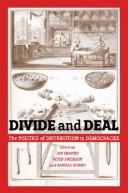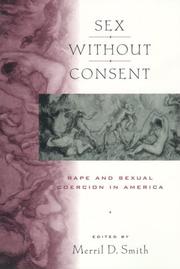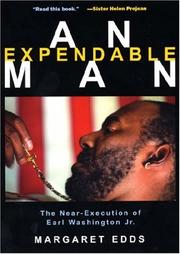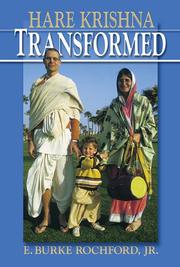| Listing 1 - 10 of 12 | << page >> |
Sort by
|
Book
ISBN: 0814759084 0814758681 9780814758687 9780814758533 0814758533 9780814759080 0814763898 Year: 2010 Publisher: New York, NY : New York University Press,
Abstract | Keywords | Export | Availability | Bookmark
 Loading...
Loading...Choose an application
- Reference Manager
- EndNote
- RefWorks (Direct export to RefWorks)
They go by many names: helicopter parents, hovercrafts, PFHs (Parents from Hell). The news media is filled with stories of well-intentioned parents going to ridiculous extremes to remove all obstacles from their child’s path to greatness . . . or at least to an ivy league school. From cradle to college, they remain intimately enmeshed in their children’s lives, stifling their development and creating infantilized, spoiled, immature adults unprepared to make the decisions necessary for the real world. Or so the story goes.Drawing on a wealth of eye-opening interviews with parents across the country, Margaret K. Nelson cuts through the stereotypes and hyperbole to examine the realities of what she terms “parenting out of control.” Situating this phenomenon within a broad sociological context, she finds several striking explanations for why today’s prosperous and well-educated parents are unable to set realistic boundaries when it comes to raising their children. Analyzing the goals and aspirations parents have for their children as well as the strategies they use to reach them, Nelson discovers fundamental differences among American parenting styles that expose class fault lines, both within the elite and between the elite and the middle and working classes.Nelson goes on to explore the new ways technology shapes modern parenting. From baby monitors to cell phones (often referred to as the world’s longest umbilical cord), to social networking sites, and even GPS devices, parents have more tools at their disposal than ever before to communicate with, supervise, and even spy on their children. These play important and often surprising roles in the phenomenon of parenting out of control. Yet the technologies parents choose, and those they refuse to use, often seem counterintuitive. Nelson shows that these choices make sense when viewed in the light of class expectations.Today’s parents are faced with unprecedented opportunities and dangers for their children, and are evolving novel strategies to adapt to these changes. Nelson’s lucid and insightful work provides an authoritative examination of what happens when these new strategies go too far.
Parenting --- Parent and child --- among. --- close. --- elite. --- excessively. --- explores. --- parenting. --- rise. --- sociologist. --- todays.

ISBN: 081477296X 081471711X 1441615636 0814716741 Year: 2009 Publisher: New York : New York University Press,
Abstract | Keywords | Export | Availability | Bookmark
 Loading...
Loading...Choose an application
- Reference Manager
- EndNote
- RefWorks (Direct export to RefWorks)
In early American society, one’s identity was determined in large part by gender. The ways in which men and women engaged with their communities were generally not equal: married women fell under the legal control of their husbands, who handled all negotiations with the outside world, as well as many domestic interactions. The death of a husband enabled women to transcend this strict gender divide. Yet, as a widow, a woman occupied a third, liminal gender in early America, performing an unusual mix of male and female roles in both public and private life.With shrewd analysis of widows’ wills as well as prescriptive literature, court appearances, newspaper advertisements, and letters, The Widows’ Might explores how widows were portrayed in early American culture, and how widows themselves responded to their unique role. Using a comparative approach, Vivian Bruce Conger deftly analyzes how widows in colonial Massachusetts, South Carolina, and Maryland navigated their domestic, legal, economic, and community roles in early American society.
Widows --- History. --- Economic conditions. --- American. --- Might. --- culture. --- early. --- explores. --- portrayed. --- responded. --- role. --- their. --- themselves. --- unique. --- were. --- widows.
Book
ISBN: 0814739121 081478710X 9780814787106 9780814739129 9780814791325 0814791328 9780814791332 0814791336 Year: 2010 Publisher: New York New York University Press
Abstract | Keywords | Export | Availability | Bookmark
 Loading...
Loading...Choose an application
- Reference Manager
- EndNote
- RefWorks (Direct export to RefWorks)
Arkansas, 1943. The Deep South during the heart of Jim Crow-era segregation. A Japanese-American person boards a bus, and immediately is faced with a dilemma. Not white. Not black. Where to sit?By elucidating the experience of interstitial ethnic groups such as Mexican, Asian, and Native Americans—groups that are held to be neither black nor white—Leslie Bow explores how the color line accommodated—or refused to accommodate—“other” ethnicities within a binary racial system. Analyzing pre- and post-1954 American literature, film, autobiography, government documents, ethnography, photographs, and popular culture, Bow investigates the ways in which racially “in-between” people and communities were brought to heel within the South’s prevailing cultural logic, while locating the interstitial as a site of cultural anxiety and negotiation.Spanning the pre- to the post- segregation eras, Partly Colored traces the compelling history of “third race” individuals in the U.S. South, and in the process forces us to contend with the multiracial panorama that constitutes American culture and history.
Segregation --- Asian Americans --- Desegregation --- Race discrimination --- Minorities --- Asians --- Ethnology --- Race identity --- Southern States --- Race relations. --- 1943. --- Americans. --- Arkansas. --- Asian. --- Crow-era. --- Deep. --- Japanese-American. --- Leslie. --- Mexican. --- Native. --- South. --- Where. --- accommodate. --- accommodated. --- binary. --- black. --- boards. --- bus. --- color. --- dilemma. --- during. --- elucidating. --- ethnic. --- ethnicities. --- experience. --- explores. --- faced. --- groups. --- heart. --- held. --- immediately. --- interstitial. --- line. --- neither. --- other. --- person. --- racial. --- refused. --- segregation. --- sit. --- such. --- system. --- that. --- white. --- with. --- within.

ISBN: 0814740596 0814740588 0814708838 0814740766 9780814740767 9780814740583 9780814708835 9780814740590 Year: 2008 Publisher: New York : New York University Press,
Abstract | Keywords | Export | Availability | Bookmark
 Loading...
Loading...Choose an application
- Reference Manager
- EndNote
- RefWorks (Direct export to RefWorks)
Why are democracies so unequal? Despite the widespread expectation that democracy, via expansion of the franchise, would lead to redistribution in favor of the masses, in reality majorities regularly lose out in democracies. Taking a broad view of inequality as encompassing the distribution of wealth, risk, status, and well-being, this volume explores how institutions, individuals, and coalitions contribute to the often surprising twists and turns of distributive politics.The contributors hail from a range of disciplines and employ an array of methodologies to illuminate the central questions of democratic distributive politics: What explains the variety of welfare state systems, and what are their prospects for survival and change? How do religious beliefs influence people’s demand for redistribution? When does redistributive politics reflect public opinion? How can different and seemingly opposed groups successfully coalesce to push through policy changes that produce new winners and losers?The authors identify a variety of psychological and institutional factors that influence distributive outcomes. Taken together, the chapters highlight a common theme: politics matters. In seeking to understand the often puzzling contours of distribution and redistribution, we cannot ignore the processes of competition, bargaining, building, and destroying the political alliances that serve as bridges between individual preferences, institutions, and policy outcomes.
Democracy -- Economic aspects. --- Distribution (Economic theory) -- Political aspects. --- Distributive justice. --- Income distribution -- Political aspects. --- Distribution (Economic theory) --- Income distribution --- Distributive justice --- Democracy --- Business & Economics --- Economic History --- Political aspects --- Economic aspects --- Political aspects. --- Economic aspects. --- Distribution of income --- Income inequality --- Inequality of income --- Justice --- Social justice --- Wealth --- Disposable income --- Moral and ethical aspects --- E-books --- Taking. --- broad. --- coalitions. --- contribute. --- distribution. --- distributive. --- encompassing. --- explores. --- individuals. --- inequality. --- institutions. --- often. --- politics. --- risk. --- status. --- surprising. --- this. --- turns. --- twists. --- view. --- volume. --- wealth. --- well-being.
Book
ISBN: 0814788424 0814788262 9780814788264 9780814788424 9780814788233 0814788238 9780814788240 0814788246 Year: 2010 Publisher: New York New York University Press
Abstract | Keywords | Export | Availability | Bookmark
 Loading...
Loading...Choose an application
- Reference Manager
- EndNote
- RefWorks (Direct export to RefWorks)
Caught between violent partners and the bureaucratic complications of the US Immigration system, many immigrant women are particularly vulnerable to abuse. For two years, Roberta Villalón volunteered at a nonprofit group that offers free legal services to mostly undocumented immigrants who had been victims of abuse. Her innovative study of Latina survivors of domestic violence explores the complexities at the intersection of immigration, citizenship, and violence, and shows how inequality is perpetuated even through the well-intentioned delivery of vital services. Through archival research, participant observation, and personal interviews, Violence Against Latina Immigrants provides insight into the many obstacles faced by battered immigrant women of color, bringing their stories and voices to the fore. Ultimately, Villalón proposes an active policy advocacy agenda and suggests possible changes to gender violence-based immigration laws, revealing the complexities of the lives of Latina immigrants as they confront issues of citizenship, gender violence, and social inequalities.
Latin Americans --- Women immigrants --- Latinxs --- Ethnology --- Immigrant women --- Immigrants --- Social conditions. --- Violence against --- United States --- Emigration and immigration --- Social aspects. --- Caught. --- Latina. --- Roberta. --- Villalon. --- abuse. --- been. --- between. --- bureaucratic. --- citizenship. --- complexities. --- complications. --- delivery. --- domestic. --- even. --- explores. --- free. --- group. --- immigrant. --- immigrants. --- immigration. --- inequality. --- innovative. --- intersection. --- legal. --- many. --- mostly. --- nonprofit. --- offers. --- particularly. --- partners. --- perpetuated. --- services. --- shows. --- study. --- survivors. --- system. --- that. --- through. --- undocumented. --- victims. --- violence. --- violent. --- vital. --- volunteered. --- vulnerable. --- well-intentioned. --- women. --- years.
Book
ISBN: 081470879X 0814783597 9780814783597 9780814708798 0814740898 9780814740897 9780814740897 0814740898 9780814740903 0814740901 Year: 2010 Publisher: New York : New York University Press,
Abstract | Keywords | Export | Availability | Bookmark
 Loading...
Loading...Choose an application
- Reference Manager
- EndNote
- RefWorks (Direct export to RefWorks)
Although the United States has always been a nation of immigrants, the recent demographic shifts resulting in burgeoning young Latino and Asian populations have literally changed the face of the nation. This wave of massive immigration has led to a nationwide struggle with the need to become bicultural, a difficult and sometimes painful process of navigating between ethnic cultures. While some Latino adolescents become alienated and turn to antisocial behavior and substance use, others go on to excel in school, have successful careers, and build healthy families. Drawing on both quantitative and qualitative data ranging from surveys to extensive interviews with immigrant families, Becoming Bicultural explores the individual psychology, family dynamics, and societal messages behind bicultural development and sheds light on the factors that lead to positive or negative consequences for immigrant youth. Paul R. Smokowski and Martica Bacallao illuminate how immigrant families, and American communities in general, become bicultural and use their bicultural skills to succeed in their new surroundings The volume concludes by offering a model for intervention with immigrant teens and their families which enhances their bicultural skills.
Assimilation (Sociology) --- Hispanic Americans. --- Minority youth --- Biculturalism --- Youth --- Hispanic Americans --- Hispanics (United States) --- Latino Americans --- Latinos (United States) --- Latinxs --- Spanish Americans in the United States --- Spanish-speaking people (United States) --- Spanish-surnamed people (United States) --- Ethnology --- Latin Americans --- Spanish Americans (Latin America) --- Multiculturalism --- Cultural assimilation --- Anthropology --- Socialization --- Acculturation --- Cultural fusion --- Emigration and immigration --- Minorities --- Becoming. --- Drawing. --- behind. --- bicultural. --- both. --- consequences. --- data. --- development. --- dynamics. --- explores. --- factors. --- family. --- immigrant. --- individual. --- lead. --- light. --- messages. --- negative. --- positive. --- psychology. --- qualitative. --- quantitative. --- sheds. --- societal. --- that. --- youth.

ISBN: 0814708625 0814797881 081479789X Year: 2001 Publisher: New York NYU Press
Abstract | Keywords | Export | Availability | Bookmark
 Loading...
Loading...Choose an application
- Reference Manager
- EndNote
- RefWorks (Direct export to RefWorks)
A group of men rape an intoxicated fifteen year old girl to ""make a woman of her."" An immigrant woman is raped after accepting a ride from a stranger. A young mother is accosted after a neighbor escorts her home. In another case, a college frat party is the scene of the crime. Although these incidents appear similar to accounts one can read in the newspapers almost any day in the United States, only the last one occurred in this century. Each, however, involved a woman or girl compelled to have sex against her will. Sex without Consent explores the experience, prosecution, and meaning of rap
Sex discrimination in criminal justice administration --- Sex crimes --- Rape --- History. --- American. --- Americans. --- Europeans. --- Explores. --- Native. --- between. --- contact. --- early. --- experience. --- from. --- history. --- meaning. --- present. --- prosecution. --- rape. --- time. --- Assault, Criminal (Rape) --- Assault, Sexual --- Criminal assault (Rape) --- Nonconsensual sexual intercourse --- Sexual assault --- Offenses against the person --- Abuse, Sexual --- Sex offenses --- Sexual abuse --- Sexual crimes --- Sexual delinquency --- Sexual offenses --- Sexual violence --- Crime --- Prostitution --- Forced sexual intercourse --- Forced sexual penetration --- Penetration, Forced sexual --- Sexual intercourse, Forced --- Sexual intercourse, Nonconsensual --- Sexual penetration, Forced

ISBN: 0814722792 081472244X 1417588209 9781417588206 9780814722220 0814722229 9780814722794 9780814722398 0814722393 9780814722442 Year: 2003 Publisher: New York : New York University Press,
Abstract | Keywords | Export | Availability | Bookmark
 Loading...
Loading...Choose an application
- Reference Manager
- EndNote
- RefWorks (Direct export to RefWorks)
How is it possible for an innocent man to come within nine days of execution? An Expendable Man answers that question through detailed analysis of the case of Earl Washington Jr., a mentally retarded, black farm hand who was convicted of the 1983 rape and murder of a 19-year-old mother of three in Culpeper, Virginia. He spent almost 18 years in Virginia prisons—9 1/2 of them on death row—for a murder he did not commit. This book reveals the relative ease with which individuals who live at society's margins can be wrongfully convicted, and the extraordinary difficulty of correcting such a wrong once it occurs. Washington was eventually freed in February 2001 not because of the legal and judicial systems, but in spite of them. While DNA testing was central to his eventual pardon, such tests would never have occurred without an unusually talented and committed legal team and without a series of incidents that are best described as pure luck. Margaret Edds makes the chilling argument that some other “expendable men” almost certainly have been less fortunate than Washington. This, she writes, is “the secret, shameful underbelly” of America's retention of capital punishment. Such wrongful executions may not happen often, but anyone who doubts that innocent people have been executed in the United States should remember the remarkable series of events necessary to save Earl Washington Jr. from such a fate.
DNA fingerprinting --- Capital punishment --- Discrimination in criminal justice administration --- People with mental disabilities and crime --- Death row inmates --- African American prisoners --- Abolition of capital punishment --- Death penalty --- Death sentence --- Criminal law --- Punishment --- Executions and executioners --- Crime and people with mental disabilities --- Mentally handicapped and crime --- Crime --- Death row prisoners --- Prisoners --- Afro-American prisoners --- Prisoners, African American --- Moral and ethical aspects --- Washington, Earl. --- 19-year-old. --- 1983. --- Culpeper. --- Earl. --- Expendable. --- Jr. --- Virginia. --- Washington. --- black. --- case. --- convicted. --- execution. --- explores. --- farm. --- hand. --- mentally. --- mother. --- murder. --- near. --- rape. --- retarded. --- three.

ISBN: 0814776884 0814769071 1435607392 9781435607392 9780814775783 0814775780 9780814775790 0814775799 9780814769072 9780814776889 Year: 2007 Publisher: New York : New York University Press,
Abstract | Keywords | Export | Availability | Bookmark
 Loading...
Loading...Choose an application
- Reference Manager
- EndNote
- RefWorks (Direct export to RefWorks)
Most widely known for its adherents chanting “Hare Krishna” and distributing religious literature on the streets of American cities, the Hare Krishna movement was founded in New York City in 1965 by A. C. Bhaktivedanta Swami Prabhupada. Formally known as the International Society for Krishna Consciousness, or ISKCON, it is based on the Hindu Vedic scriptures and is a Western outgrowth of a popular yoga tradition which began in the 16th century. In its first generation ISKCON actively deterred marriage and the nuclear family, denigrated women, and viewed the raising of children as a distraction from devotees' spiritual responsibilities. Yet since the death of its founder in 1977, there has been a growing women’s rights movement and also a highly publicized child abuse scandal. Most strikingly, this movement has transformed into one that now embraces the nuclear family and is more accepting of both women and children, steps taken out of necessity to sustain itself as a religious movement into the next generation. At the same time, it is now struggling to contend with the consequences of its recent outreach into the India-born American Hindu community. Based on three decades of in-depth research and participant observation, Hare Krishna Transformed explores dramatic changes in this new religious movement over the course of two generations from its founding.
Hindu converts --- Hinduism --- Families --- Converts --- Hindus --- Religions --- Brahmanism --- Family --- Family life --- Family relationships --- Family structure --- Relationships, Family --- Structure, Family --- Social institutions --- Birth order --- Domestic relations --- Home --- Households --- Kinship --- Marriage --- Matriarchy --- Parenthood --- Patriarchy --- Religious aspects --- International Society for Krishna Consciousness. --- Social aspects --- Social conditions --- Krishna --- Christna --- Gopal --- Kr̥ṣṇa --- Govinda --- Mohan --- Gopala --- Bal Gopal --- Cult --- International Society for Krishna Consciousness --- International Society for Krsna Consciousness --- Internationale gemeenschap voor Krishna-bewustzijn --- History. --- Krishna (Hindu deity) --- Based. --- Hare. --- Krishna. --- Transformed. --- changes. --- course. --- decades. --- dramatic. --- explores. --- founding. --- from. --- generations. --- in-depth. --- movement. --- observation. --- over. --- participant. --- religious. --- research. --- this. --- three. --- Hare krishna --- America --- gender --- family --- culture --- change --- child abuse --- public schooling --- identity --- Hinduization --- world accomodation
Book
ISBN: 0814749119 0814748287 9780814749111 9780814748282 9780814748091 0814748090 9780814748107 0814748104 Year: 2009 Publisher: New York : New York University Press,
Abstract | Keywords | Export | Availability | Bookmark
 Loading...
Loading...Choose an application
- Reference Manager
- EndNote
- RefWorks (Direct export to RefWorks)
African American Muslims and South Asian Muslim immigrants are two of the largest ethnic Muslim groups in the U.S. Yet there are few sites in which African Americans and South Asian immigrants come together, and South Asians are often held up as a "model minority" against African Americans. However, the American ummah, or American Muslim community, stands as a unique site for interethnic solidarity in a time of increased tensions between native-born Americans and immigrants. This ethnographic study of African American and South Asian immigrant Muslims in Chicago and Atlanta explores how Islami
African American women -- Religious life. --- Atlanta (Ga.) -- Race relations. --- Chicago (Ill.) -- Race relations. --- Muslim women -- United States -- Social conditions. --- Muslims -- United States -- Social conditions -- Case studies. --- Sex role -- United States -- Case studies. --- Social classes -- United States -- Case studies. --- South Asian American women -- Religious life. --- United States -- Race relations -- Case studies. --- Women immigrants -- United States -- Social conditions. --- African. --- American. --- Asian. --- Atlanta. --- Chicago. --- Islamic. --- Muslims. --- South. --- This. --- challenged. --- class. --- create. --- equality. --- ethnographic. --- explores. --- harmony. --- hopeful. --- ideals. --- immigrant. --- inequalities. --- possibilities. --- race. --- racial. --- remains. --- society. --- study. --- that. --- Muslim women --- Women immigrants --- African American women --- South Asian American women --- Muslims --- Social classes --- Sex role --- Social conditions. --- Religious life. --- Social conditions --- Chicago (Ill.) --- Atlanta (Ga.) --- United States --- Race relations. --- Race relations
| Listing 1 - 10 of 12 | << page >> |
Sort by
|

 Search
Search Feedback
Feedback About UniCat
About UniCat  Help
Help News
News